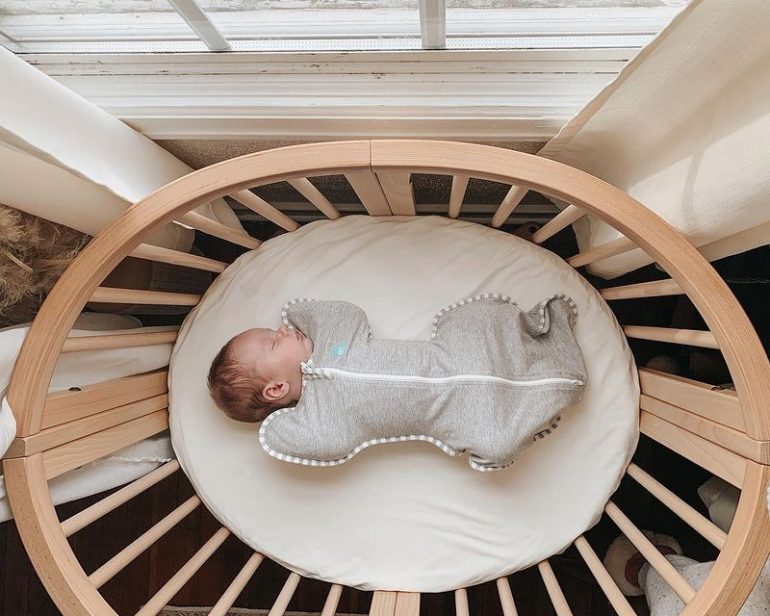Are you ready more than ever to take back your nights? We heard you! Gone are the days where you swoon over baby in the wee hours of the morning. Now all you wish is that your little bub will sleep throughout the night, fast. Not to worry, you’re not alone and all new parents have been there! Here are our mum and expert-approved sure-fire ways to help your baby sleep better and for longer stretches at a time. Sleep, here we come!
Watch for the first signs of sleepiness
Perfect timing is the essence of a successful full night’s sleep for your baby and for this, a mother’s instinct comes in. Tuning in to your little one’s biological clock ensures that when you lay him/her down in her cot, la la land takes over seamlessly. According to Tracy Hogg, also known as the Baby Whisperer, there are various personality profiles of babies. If you have an ‘Angel’ baby, sleep is a non-issue as angel babies wind down easily and are good sleepers. However, if you’ve got a ‘Spirited’ baby, well, let’s just say that sleep isn’t part of his/her personality type, and it takes more than just signs of sleepiness to get him/her to bed. It’s good to figure out just how your baby takes to sleep and by this, we don’t mean at nap times, but bedtime. If you wait too long to put baby down, he/she may become overtired meaning melatonin (the all-powerful sleep hormone) levels are low and wakefulness hormones like cortisol and adrenaline are on a high – that’s a recipe for disaster right there.
Swaddle, swaddle, swaddle
“I have a spirited baby and no amount of swaddling is ever going to work!” While this may be so, sleep experts near and far still advocate that swaddling a baby is your best bet to getting him/her and yourself a good night’s rest. If you don’t succeed with swaddling initially, try and try again. There are many different kinds of swaddles in the market today and what works well for one baby, may not be so for another. Try out the simplest traditional cloth swaddles like those from Little Rei that are crafted with premium bamboo rayon muslin that’s gentle and breathable. Doesn’t work? Check out the revolutionary Love To Dream’s award-winning Swaddle Up™. Unlike traditional swaddles that keep a baby’s arms by their side or across their chest, the unique Arms Up™ has patented wings that allow a baby to sleep in their natural Arms Up™ position. This means your baby can easily touch their face and suck on their hands as well as fingers to self-soothe.

Keep to regular sleep, wake and nap times
Whether your little one is angelic when he/she naps or is a fighter when it comes to even being put down for a rest, keeping to regular sleep, wake and nap times help to keep your child’s body clock in a regular pattern. Seasoned parents will tell you that babies thrive on routine and if you’re consistently keeping to it, sooner or later your child will know you mean business and sleep struggles, if any, will be less. Once your baby is older, nap times should be kept short so that his/her bedtime routine will be not be compromised. Longer and later naps can make it harder for baby to get to sleep at night. The key here is to be consistent as much as possible with the timings, but don’t sweat it especially for naps if your baby doesn’t keep to them. What’s more important is that he/she gets a good, long, night’s rest.
Establish a consistent bedtime routine – bath, book, bed
Bedtime should be kept consistent too as far as possible. Babies should be kept secure, happy, and calm in the time leading up to bedtime. You can begin by giving baby a nice warm bath, followed by a gentle massage, then a bedtime story (even if you seem to be reading the same book over and over again because it’s your bub’s fave), and singing a lullaby. Bedtime routines differ across households, but whatever it is, these rituals serve to help baby wind down for the night and make the transition from waking to sleeping more pleasant.
Lower the temp
In Singapore, this goes without saying, but in actual fact, babies sleep better when they are not feeling all icky and warm. What’s the best temperature range? Most experts say it’s between 68 to 72 degrees Fahrenheit or 20 to 22 degrees Celsius[1]. Touch his/her chest to determine whether baby is feeling too cold. If your baby’s swaddled, then you’ve nothing to worry about.
Cut the sounds, with more sounds
Ever heard of this? You would think that if all is quiet, your baby will sleep faster and longer. However, according to sleep experts and a whole lot of literature out there, a darkened room fitted with a white-noise machine works wonders as it replicates what it’s like in the womb. Half of baby’s sleep is the Rapid Eye Movement (REM) stage meaning that he/she is in light sleep mode so any distractions might wake him/her up. White noise machines drown out the sounds outside the room and there are many out there to choose from. If you’re still testing if this works with your little bub, downloading white noise apps might do the trick too.

Opt for a pacifier…or don’t
Sleep association is any behaviour that helps your baby fall asleep and while there are some experts and parents who are not for it, some don’t see the harm. In essence, not all sleep associations are ‘bad’. If your baby relies on you to rock or cradle him/her to sleep, then when he/she wakes up at night, he/she will need you to come in and recreate that same environment as he/she is unable to do so on their own. This is considered a negative sleep association, whereas a positive one would be something your baby can use or do on their own to help them fall asleep. Using a pacifier to help baby learn to self-soothe might be just what he/she needs initially. Some babies find their thumbs and fingers much earlier and sucking on them does the trick!
Have supplies for night-time change within reach
The last thing you want to do is to scramble in the dark to look for a clean diaper or romper when baby has an unexpected poo or milk incident. Take it from us, the likelihood of midnight changes happening is pretty often. Have a shelf or table with all the key essentials for a quickie night-time change right by baby’s cot and double-line the cot mattress with a sheet, disposable waterproof changing pad, and another sheet again. In this way, you can easily take away the soiled pad and top sheet without leaving the mattress entirely exposed. Rompers that make quick changes fuss-free are a god-send like those available from Oe-teo. The Easyeo baby rompers come with no snaps, no zips, no buttons, and you can easily pull down to
change your little bub easily.
Gradually shift your baby’s circadian rhythm
Slowly but surely, your baby will be able to sleep slightly later and that pesky 5 am wake time is a thing of the past. If your baby wakes up too early and is all ready to start the day, then maybe it’s time you adjust his/her circadian rhythm (internal biological clock) in order to achieve a permanently later wake time. Before you start the shift, check off a few things off the list as to why he/she might be awake. Is it due to a negative sleep association that you need to be rid of? Is he/she going to bed too early? You might have to sort those out first before intentionally shifting your baby’s circadian rhythm. Start by shifting all routines 15 minutes later each day and within a week or two, your baby’s body clock will be adjusted too.
Be flexible when putting baby to sleep
No baby is the same and even with the same baby, no single approach works all the time, every time. That’s just it with babies and you’ve got to be flexible even when it comes to putting him/her to sleep. From the time your baby is born, tune in to his/her temperaments and look out for cues. Develop a night-time parenting style that works for you and also suits your little ones’ temperament. If at first this doesn’t work, be open about trying other night-time parenting styles and adapt the above tips to suit you and your baby. Follow your heart rather than some rule book and soon, both you and your little bub will be in sync and sleeping soundly.
References:
https://www.todaysparent.com/baby/baby-sleep/baby-sleep-tips-for-exhausted-new-parents/
https://parentingscience.com/baby-sleep-tips/
https://raisingchildren.net.au/toddlers/sleep/better-sleep-settling/sleep-better-tips
https://www.babysleepsite.com/blog/
https://www.sleephealthfoundation.org.au/pdfs/Tips-to-Help-Baby-Sleep-Better.pdf
https://www.sleepfoundation.org/baby-sleep
https://www.healthline.com/health/parenting/white-noise-for-babies
https://www.healthline.com/health/parenting/pick-up-put-down-method#steps-for-success
https://www.babywisemom.com/baby-whisperer-personality-types-angel/
https://parentingscience.com/infant-sleep-aid/
https://www.nestedbean.com/blogs/zen-blog/sleep-associations
https://www.babysleepscience.com/single-post/2014/05/22/how-do-i-fix-my-baby-s-early-waking
[1] https://www.webmd.com/baby/what-is-the-right-room-temperature-for-a-baby#1




